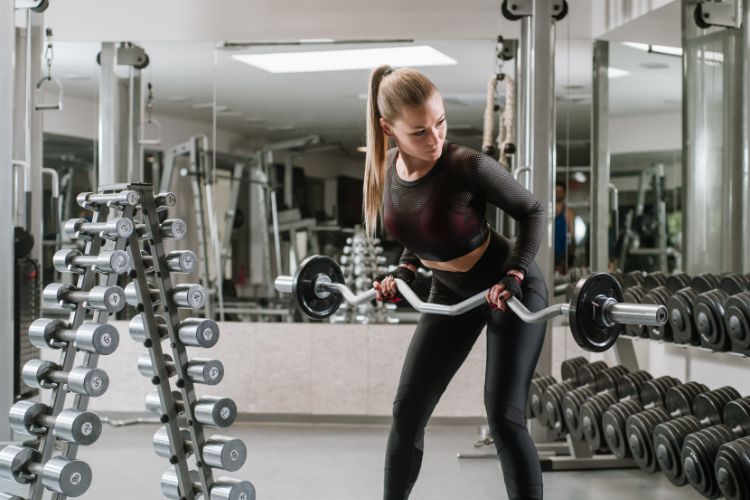Sign up for workout ideas, training advice, reviews of the latest gear and more.






Progressive overload is the foundation of muscle growth, strength gains, and long-term success in weightlifting. Whether you’re a beginner trying to gain muscle or an advanced lifter chasing new personal records, understanding and applying the principle of progressive overload is key to breaking plateaus and maximizing results.
This comprehensive guide explores everything you need to know about progressive overload weightlifting workouts, including the science behind the method, how to implement it, and the best weightlifting exercises to pair with it for full-body muscle development.
Progressive overload refers to the gradual increase of stress placed on the body during resistance training. The idea is simple: to build muscle, strength, and endurance, you must continuously challenge your body beyond its current capacity. When properly applied, progressive overload leads to muscle hypertrophy, increased strength, and better overall performance in the gym.
Without progressive overload, your body adapts to the stress you place on it and stops growing. Lifting the same weights for the same number of reps over time results in a training plateau. This is why even the best workout programs need structured progression to drive continued adaptation.
There are multiple ways to implement progressive overload, and you don’t need to lift heavier weights every session. Here are the main variables you can manipulate:
The most obvious method: add more weight to your lifts over time. If you benched 135 lbs last week, aim for 140 lbs this week while keeping the same rep scheme.
If you’re lifting the same weight, try increasing your reps. Going from 8 to 10 reps at the same load is a form of overload that encourages muscular endurance and hypertrophy.
Adding another set can also contribute to overall training volume. For example, if you’ve been doing 3 sets of deadlifts, moving to 4 sets increases your total workload.
Slowing down the eccentric (lowering) or concentric (lifting) phase of a movement increases time under tension, a key driver of muscle growth.
By shortening rest intervals between sets, you make your muscles work harder with less recovery, increasing metabolic stress and cardiovascular endurance.
Using better technique and a full range of motion makes the exercise more challenging, even without increasing the weight.
To get the most out of progressive overload training, focus on compound movements that engage multiple muscle groups. These lifts allow for the greatest load potential and overall growth.
A cornerstone of leg training, squats target the quads, hamstrings, glutes, and core. Because they recruit large muscle groups, they’re ideal for progressive overload.
Progressive Strategy: Start with a moderate weight, then increase by 5–10 lbs weekly as your form and strength improve.
This full-body lift is king for building posterior chain strength. Deadlifts train the hamstrings, glutes, spinal erectors, lats, and traps.
Progressive Strategy: Add small increments (2.5–10 lbs) weekly while monitoring your form and grip strength.
Targeting the chest, shoulders, and triceps, the bench press is a go-to for upper body mass and strength.
Progressive Strategy: Apply micro-loading using 2.5 lb plates to progress consistently without overreaching.
The overhead press builds powerful shoulders, triceps, and upper traps. It’s especially useful for upper body strength progression.
Progressive Strategy: Add reps before increasing weight, especially in beginners who struggle with rapid load increases.
This pulling movement hits the lats, rhomboids, and rear deltoids while also engaging the core and biceps.
Progressive Strategy: Once you can perform 3 sets of 10 reps with good form, increase the weight by 5–10 lbs.
Great for hamstrings, glutes, and lower back, RDLs complement heavy deadlifts and improve hip hinge strength.
Progressive Strategy: Add volume or time under tension before increasing load aggressively.
Here’s a sample 4-day weightlifting split that incorporates progressive overload strategies to help build strength and muscle efficiently.
Overload Tip: Track reps and aim to increase them weekly before adding weight.
Overload Tip: Alternate between increasing weight and reducing rest time weekly.
Overload Tip: Use a lifting log to add 1–2 reps each week or reduce rest by 15 seconds.
Overload Tip: Use progressive overload on accessory lifts with volume and form refinement.
Consistency is the backbone of progressive overload. Keep a detailed workout log where you track:
Over time, this data helps you understand what’s working, what needs adjustment, and when you’re truly making progress.
Going too heavy too fast compromises form and increases injury risk. Make small, controlled jumps in resistance—especially with big lifts.
Overtraining without sufficient rest, nutrition, or sleep will sabotage gains. Progressive overload demands recovery just as much as training.
Building muscle and strength takes time. Progressive overload is a marathon, not a sprint. Trust the process and focus on sustainable gains.
Never sacrifice form for heavier loads. Proper technique ensures long-term progress and minimizes injury risk.
A deload is a lighter training week that gives your body a break. Regular deloading every 4–6 weeks keeps progress sustainable.
Weightlifting and progressive overload require optimal recovery and nutrition. Prioritize:
Recovery strategies such as foam rolling, stretching, and mobility work also enhance performance and reduce injury risks.
Incorporating progressive overload into your weightlifting program is a powerful way to ensure continuous improvement in muscle mass, strength, and performance. By strategically increasing load, volume, or intensity over time, you challenge your body to grow stronger and more resilient.
Stick to the basics, track your progress, be patient, and stay consistent. Whether your goal is muscle hypertrophy, fat loss, or sheer strength, progressive overload is the proven path to long-term success in the gym.
Stay up to date on the latest women’s health, fitness and lifestyle trends and tips.